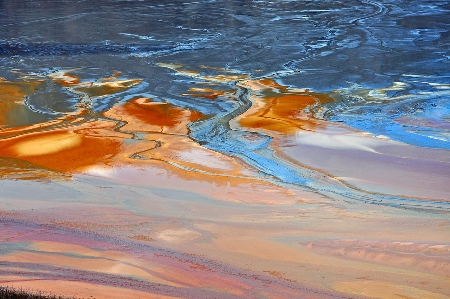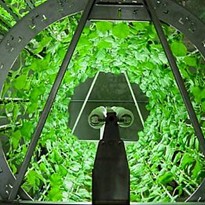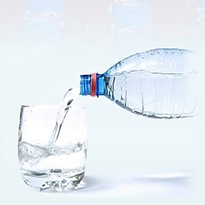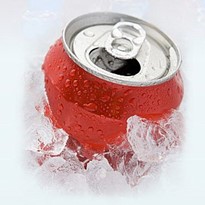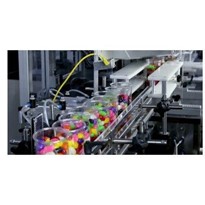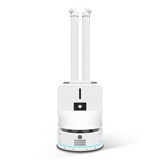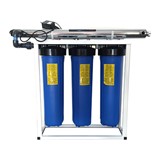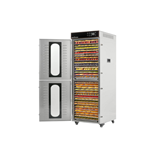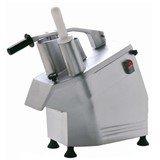Microbial growth due to contaminated water or ingredients can cause discolouration, off flavours and shortened shelf-life. The threat of contamination is further increased as manufacturers respond to demands for less chemical additives and preservatives. Effective microbial disinfection of the whole process is therefore essential.
A non-chemical disinfection method which is gaining increasing acceptance is ultraviolet (UV) disinfection. UV eliminates all known spoilage microorganisms, including bacteria, viruses, yeasts and moulds (and their spores). It is a low maintenance, environmentally friendly technology which eliminates the need for chemical treatment while ensuring high levels of disinfection.
How UV disinfection works
UV is the part of the electromagnetic spectrum between visible light and X-rays. The specific portion of the UV spectrum between 185-400nm (known as UV-C) has a strong germicidal effect, with peak effectiveness at 265nm. At these wavelengths UV eliminates microorganisms by penetrating their cell membranes and damaging the DNA, making them unable to reproduce and effectively killing them.
A typical UV disinfection system for process water or liquid ingredient consists of a UV lamp housed in a protective quartz sleeve and mounted within a cylindrical stainless steel chamber. The liquid to be treated enters at one end and passes along the entire length of the chamber before exiting at the other end. Virtually any liquid can be effectively treated with UV, including raw mains water, filtered process water, viscous sugar syrups, beverages and effluent.
There are no microorganisms known to be resistant to UV – this includes pathogenic bacteria such as Listeria, Legionella and Cryptosporidium (and its spores, which are resistant to chlorination). The UV dose necessary for deactivation varies from one species to another and is measured in millijoules per square centimetre (mJ/cm2). Values for specific microorganisms have been experimentally established and are used to determine the type and size of UV system required.
The dose received by an organism in a UV treatment system is dependent on four main factors:
- The energy output of the UV source
- The flow rate of the fluid through the treatment chamber
- The transmission value (ability to transmit UV light) of the fluid being treated
- The geometry of the treatment chamber
By optimising these criteria, a UV system can be tailored to effectively treat large or small flows, as well as viscous fluids or those containing dissolved solids and high levels of starch or sugar compounds.
There are two main types of UV technology based on the type of UV lamps used: low pressure and medium pressure. Low pressure lamps have a monochromatic UV output (limited to a single wavelength at 254nm), whereas medium pressure lamps have a polychromatic UV output (with an output between 185-400nm).
Benefits of UV disinfection
UV disinfection has many advantages over alternative methods. Unlike chemical treatment, UV does not introduce toxins or residues into process water and does not alter the chemical composition, taste, odour or pH of the fluid being disinfected.
UV treatment can be used for primary water disinfection or as a back-up for other water purification methods such as carbon filtration, reverse osmosis or pasteurisation. As UV has no residual effect, the best position for a treatment system is immediately prior to the point of use. This ensures incoming microbiological contaminants are destroyed and there is a minimal chance of post-treatment contamination.
UV applications in the food, beverage and brewing industries
Direct contact water
Although municipal water supplies are normally free from harmful or pathogenic microorganisms, this should not be assumed. In addition, water from private sources such as natural springs or boreholes could also be contaminated. Any water used as an ingredient in food or beverage products, or coming in direct contact with the product, can therefore be a source of contamination. UV disinfects this water without chemicals or pasteurisation. It also allows the re-use of process water, saving money and improving productivity without risking the quality of the product.
CIP (Clean-in-Place) rinse water
It is essential that the CIP final rinse water used to flush out foreign matter and disinfecting solutions is microbiologically safe. Fully automated UV disinfection systems can be integrated with CIP rinse cycles to ensure final rinse water does not reintroduce microbiological contaminants. Because of their high energy density, MP lamps are less affected by any sudden changes in the temperature of the CIP water than a LP lamp.
Filter disinfection
Reverse osmosis (RO) and granular activated carbon (GAC) are often used to filter process water, but can be a breeding ground for bacteria. UV is an effective way of disinfecting both stored RO and GAC filtered water and has been used in the process industries for many years.
Cooling media and chiller disinfection
Some meat and dairy products are subject to contamination after heat treatment or cooking. UV provides an excellent way to protect foods from contamination by contact-cooling fluids.
Sugar syrups
Sugar syrups can be a prime breeding ground for microorganisms. Although syrups with very high sugar content do not support microbial growth, any dormant spores may become active after the syrup has been diluted. Treating the syrup and dilution water with UV prior to use will ensure any dormant microorganisms are deactivated.
De-aerated liquor
De-aerated liquor is added as part of a high gravity brewing process, often in the packaging operation. This liquor is added directly to the beer so needs to be kept free from contamination by gram negative bacteria, which can cause off-flavours and acidity.
Yeast preparation
The problems associated with yeast preparation in breweries are well recognised and include hazes, altered fermentation and surface membranes on packaged beer. A single cell of Sacchoromyces (var. Turbidans) in 16 million cells of pitching yeast will cause detectable hazes. UV destroys all known yeasts and their spores.
Waste water
Effluent from food, beverage and brewing facilities can be treated without the use of environmentally hazardous chemicals. This ensures all discharges meet with local environmental regulations. As already mentioned, because process water can be treated and re-used with UV, this also leads to a significant reduction in the amount of waste water produced.
Bromates and bottled water – UV as an alternative to ozonation
Hanovia has recently been working with Nongfu Spring Co. Ltd., one of China's leading producers of bottled water and beverages, to supply UV systems for their production plants across China. This is a major milestone in the bottled water industry – particularly in China – because presently in that country virtually all bottled water is disinfected using ozone. And around the world ozone is still the disinfection method of choice for many producers.
The decision by Nongfu Spring to opt for UV was driven by a number of reasons, not least of which was concerns about ozonation by-products such as bromate. In fact, Hanovia has noticed that more and more bottled water and soft drinks producers are now looking for ozone alternatives, and enquiries about UV are on the increase.
Bromide ions occur naturally in many spring waters and on their own pose no problem. However, the presence of ozone can cause conversion of bromide into bromate, with the consequent potential for consumer health problems. The World Health Organization (WHO) lists bromate as a carcinogenic substance and recommends its maximum limit in mineral water be set at 0.01mg/l (10ppb). In July 2008 the Chinese General Administration of Quality Supervision, Inspection and Quarantine (AQSIQ), recommended in a revised draft national standard for drinking water and mineral water that a maximum limit for bromate in bottled water be in line the WHO guidelines. This limit has now been in force since October 2009.
Conclusion
Meeting the increasingly rigorous hygiene standards required in the production of food and beverage products is a real challenge. If improvements need to be made to plant and equipment, they need to bring quick returns on the investment and measurable improvements in product quality.
For manufacturers seeking to improve the quality of the end product, UV is an economic, realistic option. It is an established method of disinfecting drinking water throughout the world, and is also widely used for high purity applications such as pharmaceutical processing and microchip manufacturing, where water of the highest quality is essential.
UV disinfection systems are easy to install, with minimum disruption to the plant. They need very little maintenance, the only requirement being replacement of the UV lamps every 9 - 12 months, depending on use. This is a simple operation that takes only a few minutes and can be carried out by general maintenance staff.


